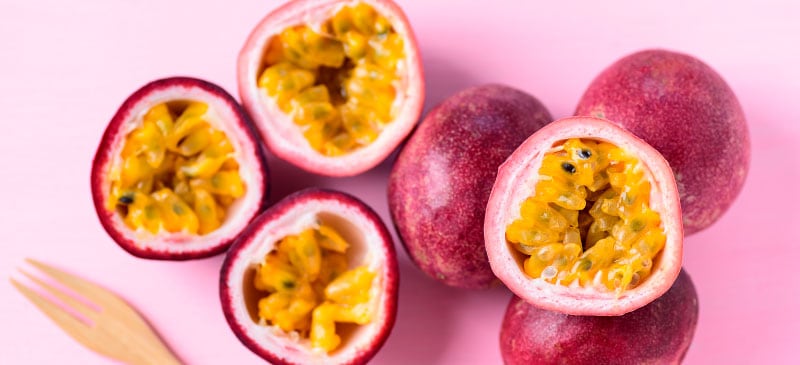This Dr. Axe content is medically reviewed or fact checked to ensure factually accurate information.
With strict editorial sourcing guidelines, we only link to academic research institutions, reputable media sites and, when research is available, medically peer-reviewed studies. Note that the numbers in parentheses (1, 2, etc.) are clickable links to these studies.
The information in our articles is NOT intended to replace a one-on-one relationship with a qualified health care professional and is not intended as medical advice.
This article is based on scientific evidence, written by experts and fact checked by our trained editorial staff. Note that the numbers in parentheses (1, 2, etc.) are clickable links to medically peer-reviewed studies.
Our team includes licensed nutritionists and dietitians, certified health education specialists, as well as certified strength and conditioning specialists, personal trainers and corrective exercise specialists. Our team aims to be not only thorough with its research, but also objective and unbiased.
The information in our articles is NOT intended to replace a one-on-one relationship with a qualified health care professional and is not intended as medical advice.
Passion Fruit’s Major Health Benefits, Plus How to Eat It
August 4, 2024

Most people are familiar with passion fruit juice or purée, but maybe you’re wondering, “Can you eat passion fruit?”
The answer is yes — and you might want to considering it’s a good source of antioxidants, fiber and other other nutrients.
This tropical fruit has long history of use in places such as Brazil, India and Hawaii, where natives believe that passion fruit benefits included lowering inflammation, improving digestion and protecting the skin.
Today, we know from studies that it may also offer protection against inflammatory conditions, such as insulin resistance and heart-related problems, and that’s not all.
What Is Passion Fruit?
Passion fruit is a type of berry that gets its name from the plant it grows on (mainly Passiflora edulis and Passiflora flavicarpa). These plants are several of an estimated hundred species of the passion flower, which belong to the Malpighiales plant family.
Passion fruit is highly nutritious and prolific, with tropical passion fruit vines growing indoors.
Passion fruit is a seedy fruit that is usually yellow or golden, although it depends on the exact type. For example, there are purple varieties grown in Australia and many hybrid types that contain a mix of different colors.
The passion fruit plant is a tropical species that is native to Brazil, Paraguay and Argentina. Today it grows in these countries, as well as throughout tropical regions, including parts of Australia, India, Africa and Hawaii.
Depending on the language, the plant goes by various names, such as granadilla, Krishna Phal and maracuya.
Species of passion fruit grown around the world include:
- Brazilian Golden
- Red Rover
- Golden Giant
- Black Knight
- Edgehill
- Frederick
- Kahuna
- Paul Ecke
What does passion fruit taste like? Passion fruit’s taste is described as being sweet-sour (or tart) and highly aromatic.
It has a strong, signature smell that stands out among other tropical fruits.
It also has a unique appearance, with a hard outer rind and a juicy center that is filled with small, edible seeds.
Nutrition Facts
Passion fruit is a good source of antioxidants, including vitamin A, vitamin C, polyphenols, beta-cryptoxanthin and carotenoids, as well as other minerals in small amounts.
One passion fruit (about 18 grams) contains approximately:
- Calories: 17.5
- Total Carbohydrates: 4.2 g
- Fiber: 1.9 g
- Sugar: 2 g
- Total Fat: 0.1 g
- Saturated Fat: 0.01 g
- Polyunsaturated Fat: 0.07 g
- Monounsaturated Fat: 0.02 g
- Trans Fat: 0 g
- Protein: 0.4 g
- Sodium: 5 mg (0.2% DV)
- Vitamin C: 5.4 mg (6% DV)
- Iron: 0.3 mg (2% DV)
- Vitamin A: 11.5 mcg (1% DV)
- Potassium: 62.6 mg (1% DV)
*Daily Value: Percentages are based on a diet of 2,000 calories a day.
It also contains several other important minerals and vitamins in lesser amounts.
Health Benefits
1. Good source of antioxidants and anti-inflammatory compounds
According to studies, passion fruit nutrition benefits include fighting free radical damage and oxidative stress thanks to the presence of phytonutrients, such as carotenoids and flavonoid polyphenols.
Within passion fruit seeds you’ll find polyphenols, including the type called piceatannol, which is associated with protection against insulin resistance among overweight adults.
Piceatannol is a naturally occurring polyphenolic stilbene found in various fruits and vegetables that may also exhibit anticancer and anti-inflammatory properties, according to research.
A 2017 randomized, placebo-controlled study that was conducted on 39 adults investigated the beneficial effects of piceatannol on metabolic health. Findings showed that piceatannol has positive effects on glucose metabolism, including insulin sensitivity, compared to placebo when taken for eight weeks.
A 2012 study out of Brazil gave 43 volunteers with type 2 diabetes (15 males, 28 females) 30 grams of yellow passion fruit peel flour per day for two months. After the two months, researchers found insulin resistance was decreased in the patients.
2. High in fiber and a low-glycemic fruit
What is the benefit of passion fruit for those following a low glycemic diet? This fruit is high in fiber, especially the kind called pectin, and low in sugar compared to other fruits.
Although it has a subtle sweetness, it can help provide nutrients without spiking your blood sugar too much.
It’s especially good for boosting your fiber intake when you consume the fruit and seeds, rather than just the juice.
3. Can help support skin health
Due to its antioxidant content and anti-inflammatory properties, this fruit can help keep skin healthy, including by helping ward off wrinkles and supporting wound healing.
Research findings also demonstrate that passion fruit seeds, which contain certain peptides, possess antifungal activities and can promote collagen synthesis.
A 2018 randomized, placebo-controlled, double-blind trial found that piceatannol from passion fruit extract is associated with a “wide variety of effects on the skin, including promoting collagen production, inhibiting melanin synthesis, inducing the antioxidant glutathione, and eliminating reactive oxygen species” when used for four to eight weeks.
According to 2013 study, piceatannol and other strong antioxidants that are present in passion fruit can reduce photoaging. The skin-protecting effects of this fruit seem to be due to its ability to suppress the UVB-induced generation of reactive oxygen species and protect fibroblasts that form the skin matrix.
4. Provides essential minerals
As a decent source of essential minerals, like magnesium, calcium, phosphorous and potassium, passion fruit benefits may include supporting bone health, cardiovascular function and physical performance.
5. Boosts immune and heart health
As a vitamin C food, passion fruit can combat free radicals and improve the immune system.
It also has the ability to boost heart health.
A 2019 study found, for instance, that passion fruit juice supplementation has the potential to help prevent cardiovascular disease.
How to Eat
How can you tell if passion fruit is ripe and ready to eat? Look for fruit that is large, plump and has skin that’s a bit wrinkled, rather than mostly smooth skin.
The fruit will typically turn from green to deep yellow or purple once ripe, then fall to the ground due to its heaviness.
To store passion fruit, wash and dry the fruit, and then store it in a bag, ideally in a cool place, for up to two to three weeks. You can also freeze both the fruit and juice to keep them fresh for longer.
You can eat this fruit raw — however you’ll want to discard the hard outer skin that is considered inedible.
You’ll get the most benefits by eating passion fruit seeds, which is where most of the fiber is found.
However, because of its tart taste, many people prefer to combine it with other sweeter fruits or creamy ingredients, like coconut milk, cream or condensed milk. The flavor of passion fruit also blends well with citrus fruits, like oranges and grapefruit.
Here are some ideas for using it in healthy recipes:
- Make a tropical smoothie using the fruit, seeds or puree along your favorite fruits (mango, pineapple, etc.) and coconut milk. For the most health benefits, use unsweetened puree or whole fruit pieces rather than sweetened juice, which will provide less sugar and more fiber.
- Combine it with other sweet berries in homemade jam/jelly.
- Use passion fruit puree or syrup to make mocktails.
- Sip on iced passion fruit tea to stay hydrated.
- Add some to sauces and marinades to boost the sweet-sour flavor.
Risks and Side Effects
What are the side effects of passion fruit? Most people can tolerate this fruit well, but there is risk for possible allergic reactions.
While the two might seem unrelated, people with latex allergies seem to be susceptible to reacting poorly to passion fruit, due to similar chemical compositions among these two substances.
In order to minimize risk for side effects, it’s best to consume this fruit in small to moderate quantities, especially if you drink passion fruit juice. Due to its sugar content, stick to servings of about four to eight ounces daily.
Final Thoughts
- Passion fruit is a tropical fruit that gets its name due to the plant that it grows on, a species of passion fruit flower.
- Because it’s high in antioxidants, including carotenoids and vitamin C, passion fruit benefits include supporting skin and eye health, boosting the immune system, and lowering inflammation and oxidative stress.
- The seeds are also a good source of fiber — plus this fruit is relatively low in sugar.
- Here’s how to eat passion fruit: Look for large fruits with a deep color, heavy weight and wrinkled skin. You can consume passion fruit seeds raw, juice the fruit or use the puree. However, the tough skin should be discarded.





